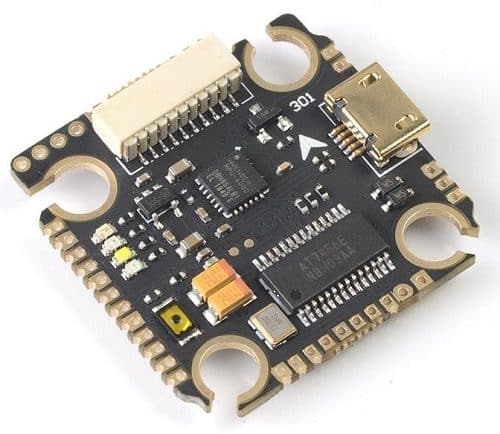Drones can be made powerful, faster and affordable by choosing the best flight controllers that enhance the ESCs (Electronic Speed Controllers) and the various connected sensors such as gyro sensors and accelerometres.

Be it defence, meteorology or package delivery, unmanned aerial vehicles (UAVs), widely known as drones, are being increasingly adopted by various sectors. It is fascinating to watch them fly high in the sky (and record videos from above). But most of us resort to buying ready made drones without realising that it can be easily build at much lower cost.
If you are excited to begin building one on your own but are confused by the many flight controllers that are available in the market out there and which one to begin with, then read on to find some of the best that will suit your requirements.
CC3D Flight Controller
Powerful and affordable for miniquad copters and multi-rotor aircrafts, the CC3D is built on STM32 32-bit microcontroller. It has 3-axis gyro sensor and 3-axis accelerometre. Weighing 8 grams, it has a small form factor in the form board size that is 30mm x 17mm. It runs on the Open Pilot firmware.

KK2.1.5
The KK2.1.5 flight controller is built on Atmega324 PA 8-bit AVR RISC-based microcontroller. Along with having gyro sensor and accelerometre, the board has a LCD display screen. Input voltage ranges from 4.8V to 6 V, weighs 20 grams and has a board size of 50.5mm x 50.5mm.

Omnibus F4 Pro V3
This flight controller is based on STM32 F403 MCU. It has gyro sensor, accelerometre, barometre and a built-in current sensor. Input voltage is 5V and has board size of 35mm x 35mm.

Pixhawk PX4
Initially designed as an open hardware project, the Pixhawk PX4 is built on STM32 F427 with 256KB RAM. It has gyro sensor, accelerometre and barometre. Input voltage is from 4.8V to 5.4V, weighs 15.8 grams and has dimensions of 44mm x 84mm.

For building micro-drones, you can refer the following:
Diatone Mamba F722
It is based on STM32 F722 and comes with gyro sensor and accelerometre, but no barometre. Input voltage is from 8.4V to 25V. Weighs 3.9 grams and has a board size of 20mm x 20mm.

Matek F722
Also based on STM32 F722, the flight controller comes with gyrosensor and accelerometre, but no barometre. Input voltage is from 7.4V to 30V, weighs 5 grams and has board size of 20mm x 20mm.

SP Racing F3 Evo
The SP Racing F3 Evo is built on STM32 F303. Its operating voltage is 3.7V to 8.4V. It weighs 15 grams and has dimensions of 32mm x 22mm.

RaceFlight MillivoltOSD
The RaceFlight MillivoltOSD is based on the STM32 F405. The flight controller is based on FlightOne software and has an operating voltage of 7.4V to 24V. Weighs 3.3 grams and has dimensions of 20mm x 20mm.

Hobbywing XRotor Nano
Also built on the STM32 F405, the Hobbywing XRotor Nano comes with an in-built on-screen display. Operating voltage is from 7.4V to 14.8V. It weighs 3.3 grams and has dimensions of 32mm x 32mm.

All these flight controllers have a powerful combination of top-class processors with small form factor, which helps to enable a low-weight, robust design and thus maintain a constant speed.









